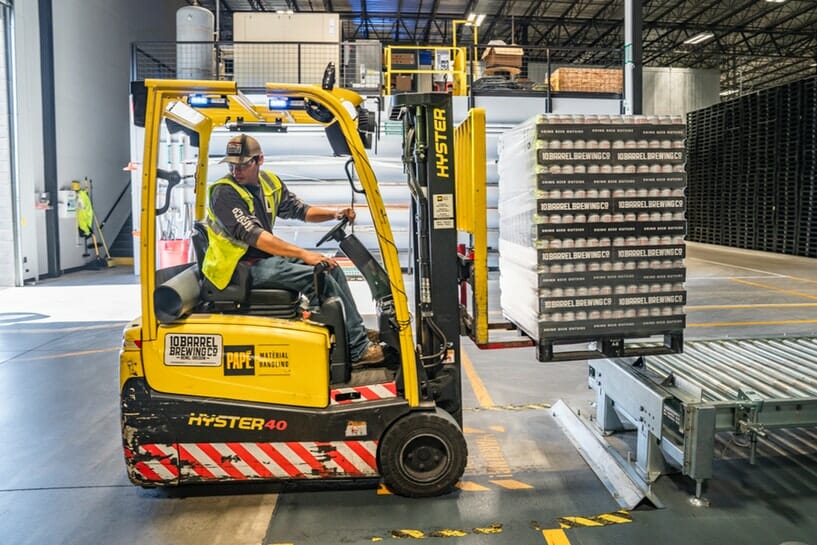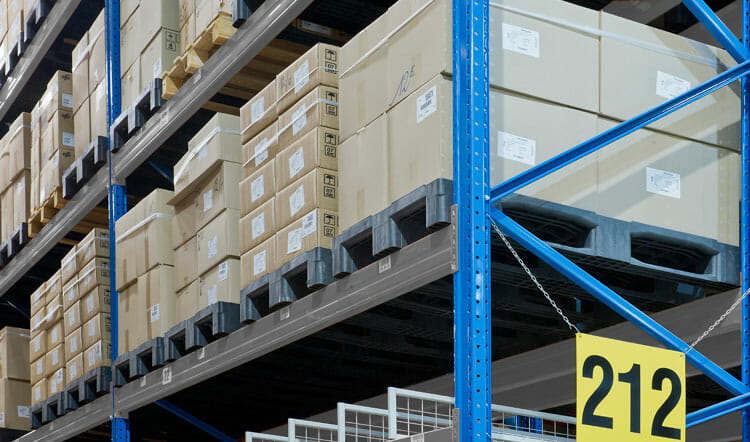
Clients often ask us “How much weight can a pallet hold?” This is a very good question so here’s everything you need to know about calculating pallet loads to suit your needs.
Before we can start, however, we need to define the term “weight”, because it’s not a single thing. In fact, here are some commonly-used phrases related to weight:
- Static Load – the maximum weight of product the pallet can carry while resting on the ground, without moving. This is typically the highest weight rating for any pallet
- Dynamic Load – the maximum weight of product the pallet can carry while it is picked up and moved by a forklift. This is typically the second weight rating of any pallet
- Racking Load – the maximum weight of product the pallet can carry while it is in a warehouse rack
- Safe Working Load (SWL) – many people have heard of this term. However, in Australia, it is not defined or regulated for plastic pallets. It is also unclear, because it could refer to a safe static load, a safe dynamic load or a safe racking load
So, as you can see, it’s important to ask specifically, “What is the dynamic load of the pallet?” instead of “How much weight can the pallet hold?”
How will you use the pallet?
Plastic pallets are made for a purpose. The level of engineering “smarts” the goes into the design and manufacture of a plastic pallet is very high. This enables pallet manufacturers to create products that suit particular applications. This can be export, cold room storage or supermarket distribution, each with its own ideal pallet.
Horses for courses
For example, a very light pallet that weighs 4kg is excellent for shipping light products by air, because its light weight reduces the cost of air freight. However, it only has a static load of 1,200kg, a dynamic load of 400kg and no racking load.
On the other hand, a heavy duty pallet that weighs 23.4kg is better for transporting heavy products or for storing in a racking system. This kind of pallet has a static load of 10,000kg, a dynamic load of 2,000kg and a racking load of 1,500kg.
Therefore, it’s important to know what kind of plastic pallet you’re dealing with, and what type of application you want to use it for.
How will you balance your load?
When you try to figure out how much a pallet will carry, the type of load is very important. For example, if you are a watermelon farmer, your load is fairly heavy, but it’s balanced evenly across the pallet. Most growers also put the watermelons into a cardboard box or a bulk container first. Then, they put that on the pallet. Using this type of container also helps spread the load evenly across the pallet.
On the other hand, if your load is a roll of printing paper, or a bulk bag of grain, it puts most of the pressure on the centre of the pallet.
Under even load distribution, the pallet can hold a lot more weight than when the load is at the centre. Therefore, when you look at pallets’ static, dynamic and racking loads, remember that these are maximum values. Your specific product packaging and load distribution may need a stronger pallet.

How will you fix the load to your pallet?
To find the effective weight a pallet can carry, it’s also important to know how the product load is held on the pallet so it doesn’t move. Shrink-wrapping the product to the pallet turns the whole shebang into one big thing. This prevents the pallet from bending during movement on a forklift and means it can take a higher dynamic load than without shrink-wrapping.
Strapping the load onto the pallet can help increase the pallet’s ability to handle the load, but not always. In the case of the roll of printing paper, strapping across the roll only increases the pressure on the middle of the pallet, and this means that the effective load on the pallet is higher than the weight of the roll.
How will you transport your pallet?
One thing you have to remember when choosing a pallet is that pallets are often stacked. Of course, if the load on your pallet is 2,000kg and you place another one on top of it, the bottom pallet now has to carry a weight of 4,000kg.
This is important when exporting in shipping containers. It also applies when stacking pallets on a factory or warehouse floor to save space.
Similarly, if your pallet will be carried by straps, moved on a forklift, or handled in any way that puts more pressure on certain areas of the pallet. You must take this into consideration and buy a pallet with a higher rating than the weight of your load.
How can you know for sure?
The best way to check how much weight your specific pallet will carry within your specific materials handling environment is to test. Good pallet suppliers can help you test by providing a few sample pallets. You can then use them for a while in your particular setting and check for yourself how they perform and how much weight they actually carry.
In summary, there are plastic pallets that can carry almost any weight. Now, you know how to choose the best one for you.
For more details, look at a few of our plastic pallets.